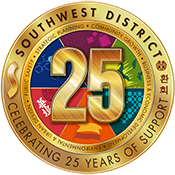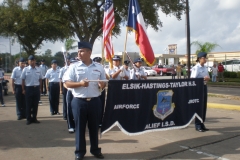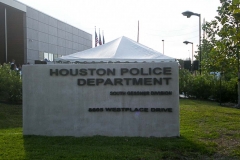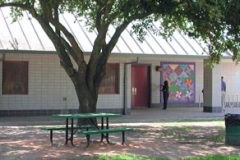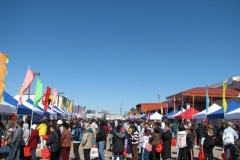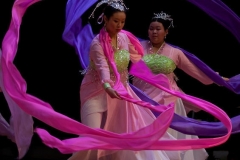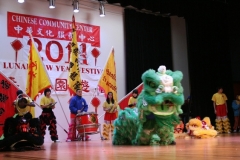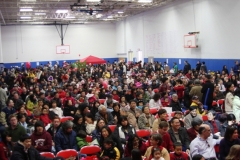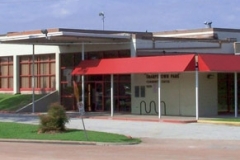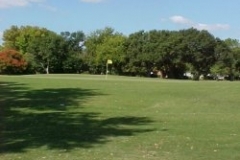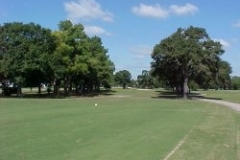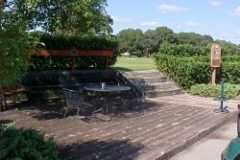History
Southwest District began as the vision of developer Frank Sharp in the mid 1950s. By the time he completed his masterpiece in 1961, Southwest District was widely recognized as the largest subdivision in the United States – complete with its own air-conditioned shopping mall and golf course. Southwest District was a true suburb of Houston, a get-a-way from the hustle and bustle of the city and a quick 15-minute commute from downtown.
During the next decade, Southwest District was a great place to be. With elegant brick homes spaced among generous lawns and quiet streets, the planned community was everything Sharp had envisioned. During the 1980s, however, new residential and commercial development jumped past Southwest District and spread farther from Houston along the Southwest Freeway. In an attempt to escape Houston’s phenomenal outward expansion, many middle-class families opted for newer developments in Missouri City, Stafford, Sugar Land, and First Colony, causing property values and the quality of life in Southwest District to suffer.
But as flight from the city continued through the’90s, a new and more diverse class of homeowner began to find in Southwest District the same benefits Frank Sharp had seen 40 years earlier — quiet neighborhoods, access to freeways, and quality housing. These new residents, many of whom were first generation Americans, began opening their own businesses, attending school, and building pride in their new community. Significant numbers of Chinese, Hispanic, African-American, and Vietnamese mixed with Anglo residents, so that as the new century approached, Southwest District had become one of the most ethnically diverse neighborhoods in Houston. No longer a suburb, the new neighborhood is more accurately described as a cosmopolitan urban edge city, with numerous types of housing, commercial and retail development, and a modern mix of cultures and incomes.
Today Southwest District is a dynamic community that embraces its diversity, encourages new growth, and looks to the future for its place among Houston’s premier regional neighborhoods. Through the Greater Southwest District Management Disctrict, Southwest District Economic Development Authority and the Southwest Houston Redevelopment Authority, area residents and business owners are working to ensure that Southwest District is once again a great place be a place to live, work, and conduct business amid the fabric of a true American neighborhood.
Southwest District Today
 Southwest District today is a community blessed with a number of resources. Key among these is an abundance of support from organizations such as the Southwest Houston Redevelopment Authority, Southwest District Economic Development Authority, Southwest Houston Chamber of Commerce, and the Southwest District Civic Association. The area enjoys a prime location near major transit arteries including U.S. 59, the Sam Houston Tollway, and the Westpark Tollway. Bellaire Boulevard and U.S. 59 represent the area’s major commercial corridors.
Southwest District today is a community blessed with a number of resources. Key among these is an abundance of support from organizations such as the Southwest Houston Redevelopment Authority, Southwest District Economic Development Authority, Southwest Houston Chamber of Commerce, and the Southwest District Civic Association. The area enjoys a prime location near major transit arteries including U.S. 59, the Sam Houston Tollway, and the Westpark Tollway. Bellaire Boulevard and U.S. 59 represent the area’s major commercial corridors.
With hundreds of unique Asian restaurants and shops, Bellaire Boulevard is both a community resource and an attraction that draws visitors from all over Houston. The Southwest Freeway hosts an outstanding array of retail and commercial establishments. Combined these two corridors contain nearly 20,000 small businesses, as well as Southwest District Center, Houston Baptist University, and Memorial Hermann Southwest Hospital.
Southwest District is home to roughly 94,500 people, with approximately 8,000 single family homes and some 7,000 condominiums and town homes. With its easy access to major commercial centers such as the Galleria, Greenway Plaza, the Medical Center, and Houston’s Downtown, Southwest District has grown into an exciting business and residential district — one imbued with a colorful past, diverse culture, and strong sense of community.
